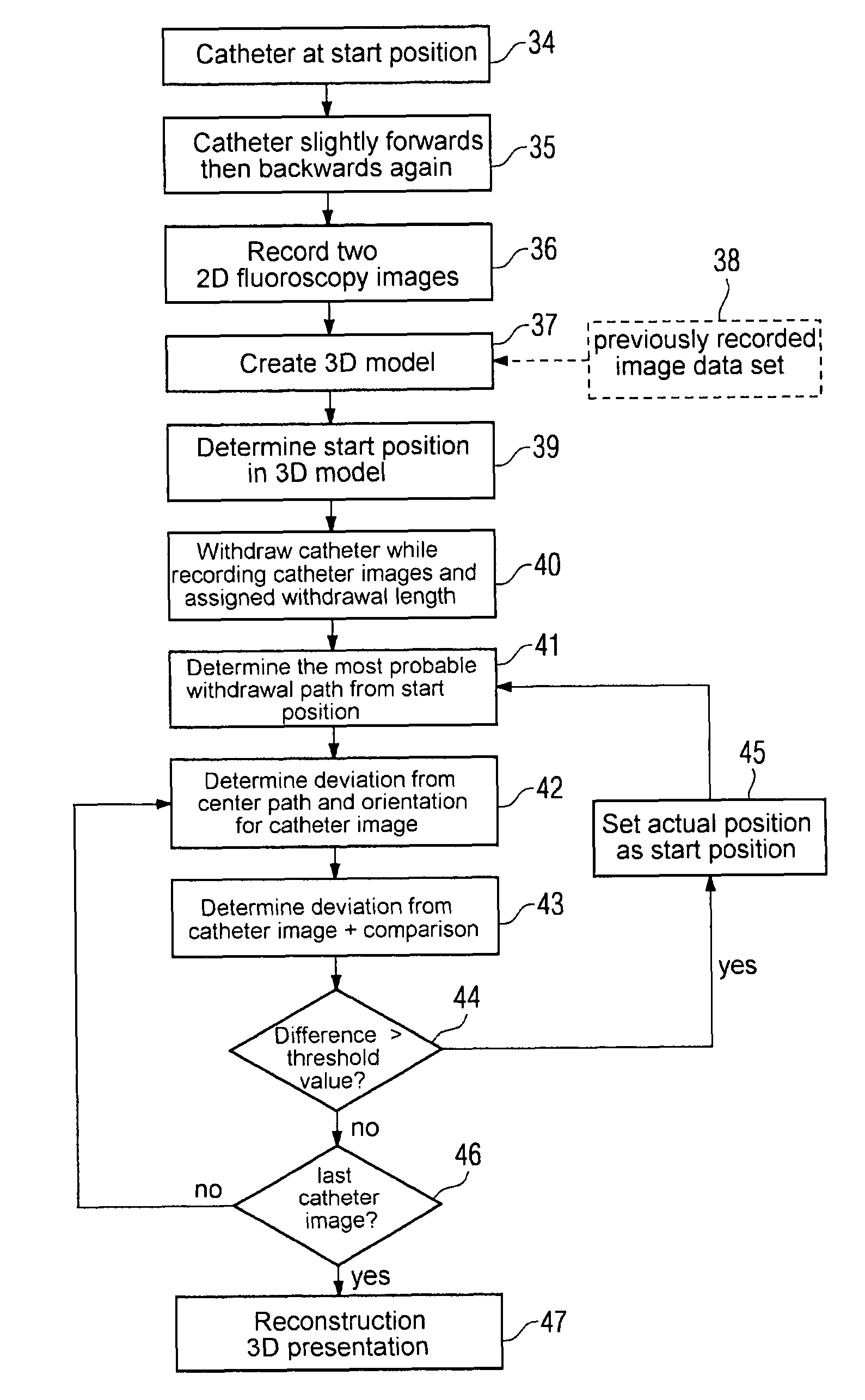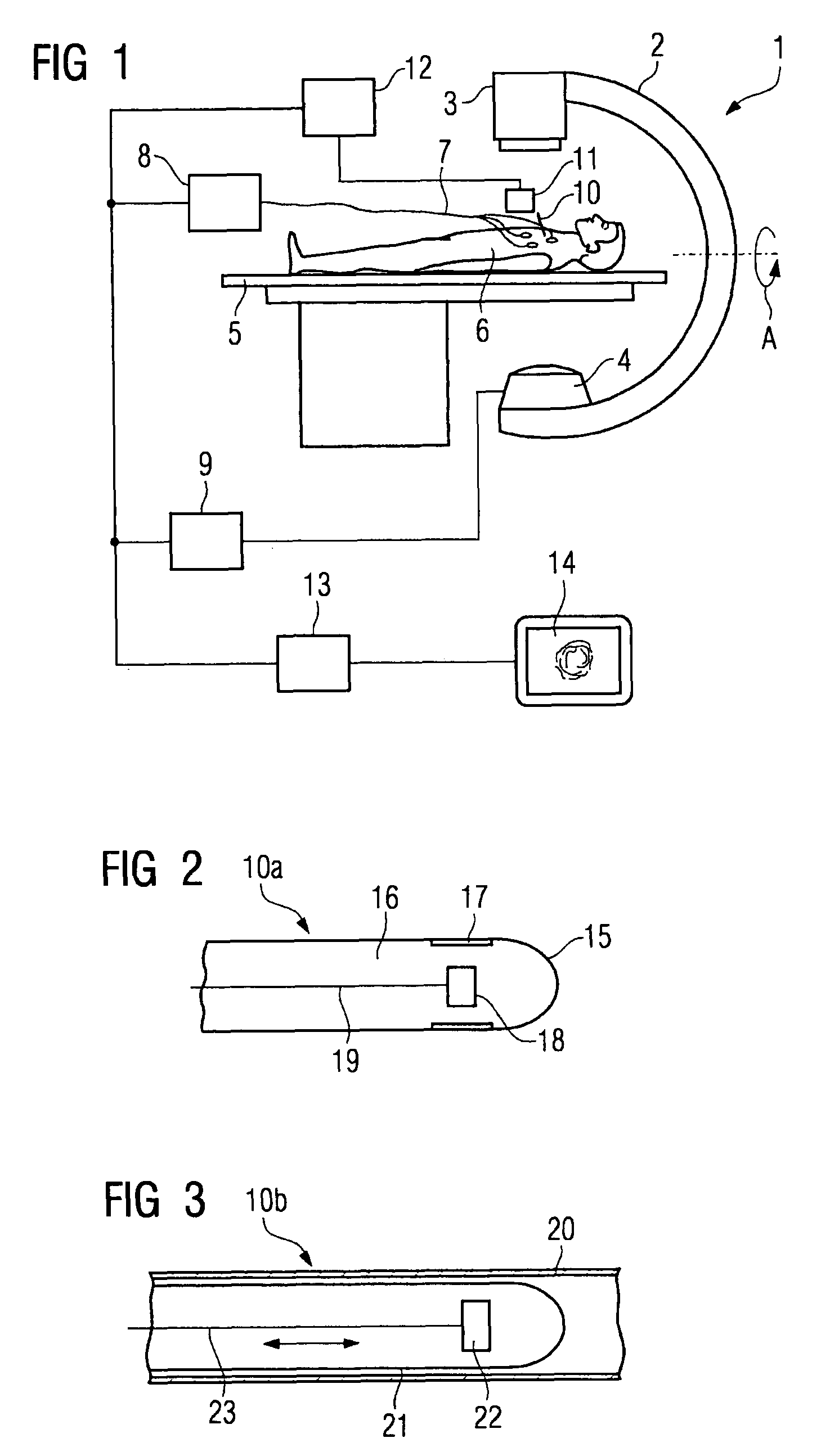Method for reconstructing a 3D presentation
a 3d reconstruction and hollow organ technology, applied in the field of 3d reconstruction of hollow organs, can solve the problems of extreme radiation load for patients, inability to 3d reconstruct two-dimensional catheter images, and only deliver information about the lumen, and achieve the effect of increasing radiation dos
- Summary
- Abstract
- Description
- Claims
- Application Information
AI Technical Summary
Benefits of technology
Problems solved by technology
Method used
Image
Examples
Embodiment Construction
[0047]FIG. 1 shows a medical examination device 1, suitable for executing the inventive method. A C-arm-x-ray system 2, comprising a radiographic source 3 and a radiation detector 4, as indicated by the arrow A, is supported to allow rotation, so that fluoroscopy images can be recorded from different angles. A biplanar x-ray device can also be used as an alternative. A patient 6 is arranged on a bed 5. The ECG value of the patient is measured using suitable recording means 7, processed in an ECG control unit 8 and assigned to an ECG phase. The connection with the x-ray control unit 9 enables two fluoroscopy images at an angle to each other to be recorded using triggering in the same ECG phase with the aid of the x-ray system 2. A catheter 10 with an image recording device arranged at its tip, not shown in any greater detail here, is introduced into a hollow organ of the patient 6. The catheter control unit 11 monitors the catheter 10 and is also embodied to perform an even withdrawa...
PUM
 Login to View More
Login to View More Abstract
Description
Claims
Application Information
 Login to View More
Login to View More - R&D
- Intellectual Property
- Life Sciences
- Materials
- Tech Scout
- Unparalleled Data Quality
- Higher Quality Content
- 60% Fewer Hallucinations
Browse by: Latest US Patents, China's latest patents, Technical Efficacy Thesaurus, Application Domain, Technology Topic, Popular Technical Reports.
© 2025 PatSnap. All rights reserved.Legal|Privacy policy|Modern Slavery Act Transparency Statement|Sitemap|About US| Contact US: help@patsnap.com



